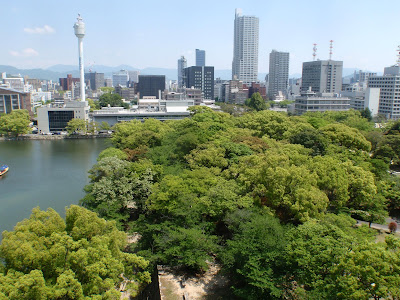 |
| Add caption |
 |
| Japanese Tea Garden |
This one was built around the same time as the Hiroshima Castle, 1600, by Samurai Hosokawa Tadaoki. It also has a moat like Hiroshima but is a much more substantial structure. There is a museum and tea garden on the Castle property.
 | |
| Japanese Mobile Bakery |
An interesting thing that we learned was
that the Shogun (chief of the clan) had a physician whose job was to go through the Shogun's poo from his
Chamber Pot and examine it daily. What a
crappy job.

The grounds of Kokura Castle

Kokura Castle and Moat


Dave Deakyne
David Deakyne
David J. Deakyne
Dave Deakyne
Wallingford
David Deakyne
David J. Deakyne
Dave Deakyne
Wallingford











